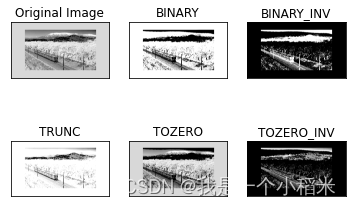1. POI区域:感兴趣区域
2. 边缘填充
3. 数值运算
import cv2
import matplotlib.pyplot as plt
import matplotlib.image as mpimg
import numpy as np
from PIL import Image
image1 = mpimg.imread('1.jpg')
image2 = mpimg.imread('2.jpg')
plt.imshow(image1)
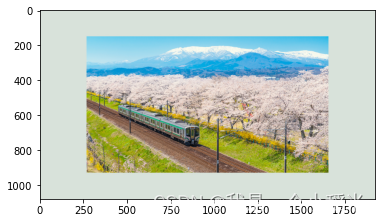
plt.imshow(image2)
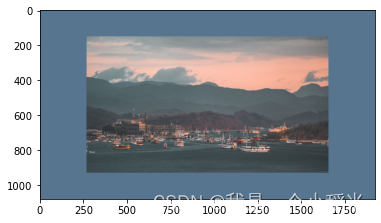
图像加法
image3 = image1+image2
plt.imshow(image3)
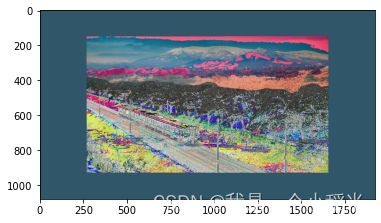
图像裁剪
plt.imshow(image1[100:-100, 100:-100, :]);
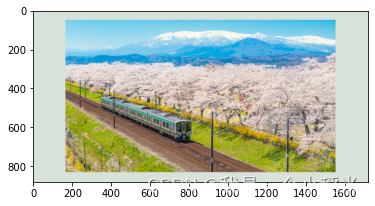
图像缩放
fx和fy表示缩放倍数
image4 = cv2.resize(image1, (0, 0), fx=3, fy=1)
plt.imshow(image4);

4. 图像阈值
ret, dst = cv2.threshold(src, thresh, maxval, type)
- src: 输入图像,只能是单通道图像
- dst:输出图
- thresh:阈值
- maxval:当像素值超过了阈值或小于阈值时的取值
- type:二值化的类型
- cv2.THRESH_BINARY 超过阈值取maxval,否则取0
- cv2.THRESH_BINARY_INV THRESH_BINARY的反转
- cv2.THRESH_TRUNC 大于阈值设置阈值,其余不变
- cv2.THRESH_TOZERO 大于阈值不变,其余设为0
- cv2.THRESH_TOZERO_INV THRESH_TOZERO的反转
image1_gray = image1[:,:,0]
res, thresh1 = cv2.threshold(image1_gray, 127, 255, cv2.THRESH_BINARY)
res, thresh2 = cv2.threshold(image1_gray, 127, 255, cv2.THRESH_BINARY_INV)
res, thresh3 = cv2.threshold(image1_gray, 127, 255, cv2.THRESH_TRUNC)
res, thresh4 = cv2.threshold(image1_gray, 127, 255, cv2.THRESH_TOZERO)
res, thresh5 = cv2.threshold(image1_gray, 127, 255, cv2.THRESH_TOZERO_INV)
titles = ['Original Image', 'BINARY', 'BINARY_INV', 'TRUNC', 'TOZERO', 'TOZERO_INV']
images = [image1_gray, thresh1, thresh2, thresh3, thresh4, thresh5]
for i in range(6):
plt.subplot(2,3,i+1)
plt.imshow(images[i], 'gray')
plt.title(titles[i])
plt.xticks([])
plt.yticks([])
plt.show()
